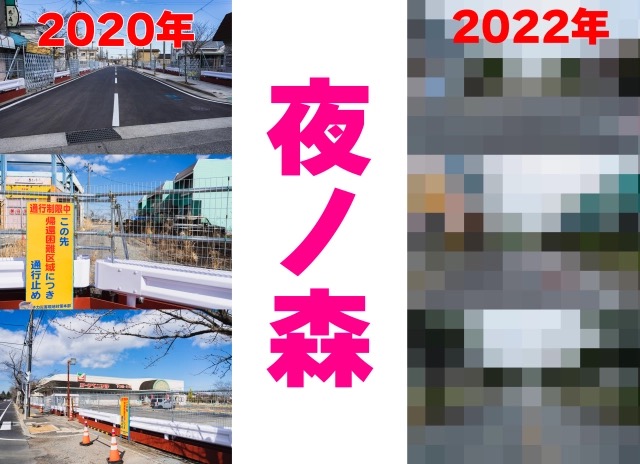
If you ever wanted to live in a post-apocalyptic zombie film, now’s your chance.
Back in 2020, our Japanese-language reporter Tasuku Egawa visited two towns in Fukushima Prefecture that were affected by the accident at Fukushima Daiichi Nuclear Power Plant, which occurred at the time of the March 2011 Great East Japan Earthquake.
▼ Tasuku visited Futaba and Tomioka, which are five kilometres (three miles) and 11 kilometres, respectively, from the nuclear power plant.
Being within the 20-kilometre exclusion zone, both towns were evacuated after the accident, turning them into ghost towns for two years. In 2013, the government opened some areas of the towns for daytime access only, with other areas remaining closed off due to elevated radiation levels, right up to 2020 when Tasuku visited.
At the time of Tasuku’s previous visit, new decontaminated areas around both stations had opened up, with old blockades being removed as a sign of the land becoming habitable once again.
▼ The decontaminated Prefectural Route 165 and National Route 6 outside Tomioka’s Yonomori Station, as it looked in March 2020.
The west exit side of the station had returned to normal while the east side remained blocked. However, side streets on both sides remained cordoned off from the public, with permission required for anyone entering the other side of the blockade, including journalists like Tasuku.
Like all visitors, Tasuku was required to wear special protective wear due to the high radiation levels.
Back in 2020, nothing but the main roads and station buildings could be entered, and the only sign of life in the area was that of security guards at empty intersections and reconstruction-related vehicles and workers.
Both towns had their work cut out for them in terms of cleanup and redevelopment, especially as the local governments planned to repopulate the areas with thousands of residents in the next seven years.
Tasuku had high hopes they would achieve this goal, so when resettlement of the towns began in earnest earlier this year, he made a return trip to Tomioka and Yonomori Station to see what developments had taken place in the two years since he last visited.
So let’s take a look at his collection of photos chronicling the difference between 2020 and now, starting with Prefectural Route 165 and National Route 6 mentioned earlier.
Now, the barricades have totally disappeared, and the intersection looks like any other, complete with a cluster of vending machines on one street corner.
Continuing straight down this road, we come to a branch of the Yamazaki convenience store chain, located on the ground floor of a residential building.
Today, the barricades have gone, but the shutters remain closed and the curtains drawn, making it look like a scary house in a ghost town.
Heading south down National Route 6, Tasuku recalled a brightly coloured apartment block he’d photographed on his last visit.
Sure enough, the building was still there, and though the weeds and barricades had been cleared, the road, and the blinds on the store window on the left, looked a little worse for wear.
The more Tasuku walked around, the more he felt as if he were walking through a post-apocalyptic world, like the character of Jim in the British zombie flick 28 Days Later. Only this was no film set, it was a real-world town that once housed around 4,000 people.
With curtains drawn on the windows of so many buildings he walked past, the place looked like it was inhabited…but it was eerily quiet, and deep down inside, Tasuku knew there was nobody behind those curtains, as these residences had been abandoned as a matter of emergency eleven years ago.
▼ Still he kept up hope that he would see signs of life somewhere, other than this road where he spotted a wild boar and a plump male pheasant.
After walking for a while, Tasuku finally breathed a sigh of relief when he came across this new apartment building, which was advertising for tenants, where he saw fresh laundry hanging on a balcony, suggesting that someone had already moved in.
Close by, there was a demountable building which looked to be the prefabricated office of a construction company, and it too appeared to be inhabited by people, likely here on temporary assignment for reconstruction-related work.
While the two main roads had been cleared and were open to traffic, Tasuku came across some salient reminders that the entire town wasn’t yet back to normal, with other areas like the local park blocked off as a restricted location.
Yonomoritsutsumi Park , as it’s known, is closed for good reason — according to the dosimeter on the other side of the fence, radiation levels here are 0.413 microSieverts per hour. The Ministry of the Environment’s requirements for decontaminated areas is 0.23 microSieverts per hour.
The high radiation levels in the park would put the public at risk of health problems, which is a great shame, seeing as it looks like it would’ve been a nice place to unwind and relax before the disaster.
It’s a vast space, though, which would make decontamination work difficult, and looking at the expanse from a nearby hill shows it’s become wild and overgrown, with what once must’ve been a lake (marked in blue below) now covered in grass and weeds.
Before coming to the town, Tasuku had been hoping to meet up with the owner of a beauty salon who used to live here but was moved to nearby Koriyama after the earthquake. She had joined Tasuku on his previous visit to Yonomori and once she’d heard the evacuation orders were being lifted this year, she said she was looking forward to moving back here.
However, the government ban on living in the area is still in effect over a large portion of the town, with only one designated zone on one side of the station open to residents from April this year. With only around a dozen or so people applying to live in the town so far, it would be a long while yet before Tasuku’s friend would be able to re-open her hair salon here.
▼ The former site of the hair salon is now an empty lot.
It’s hard to live in a ghost town, let alone run a business there, so the government hopes to make a larger area inhabitable by spring next year, in an effort to entice more residents to support local businesses.
Business owners will need a lot of support from the government, though, as a lot of them will be starting from scratch. This York-Benimaru supermarket, for instance, has since been totally demolished in the two years since 2020, and is now an empty parking lot.
If he’s being honest, the town hadn’t progressed as far as Tasuku had hoped in the past two years. Despite reopening part of the town, the place still had a real ghost-town feel to it, and the waiting room at the unstaffed station was particularly eerie, with nothing inside but a bathroom and chairs.
By comparison, the waiting room at Futaba Station, where Tasuku visited next, was a lot more inviting, with a sense of vibrancy and life to it.
Yonomori is famous for its cherry blossom trees, which line one particularly beautiful street, and while there were fears the trees would die out in the decade that humans were prohibited access to the area, the street was finally opened to visitors this year, who were able to enjoy them for the first time since 2011.
▼ The local “standard tree” by which the Meteorological Agency declares the official start of the cherry blossom season, is still alive and well.
At the moment, Yonomori is mostly home to ruins, wild boars and fat pheasants, which makes it less than appealing to potential residents. However, with the cherry blossoms still blooming, there’s hopes that the the area will soon bloom too.
Now with the station open and trains operating, it’s the start the town needs to get back on its feet, and we look forward to visiting in another two years’ time, when hopefully Tasuku’s friend’s hair salon will be open, along with other blossoming businesses.
Photos ©SoraNews24
● Want to hear about SoraNews24’s latest articles as soon as they’re published? Follow us on Facebook and Twitter!
[ Read in Japanese ]

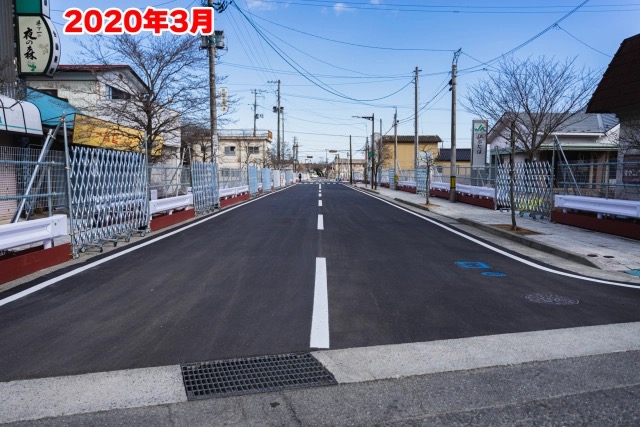
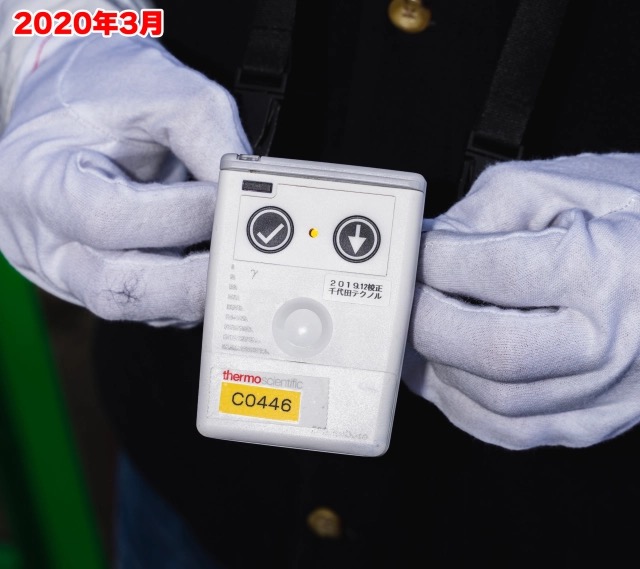
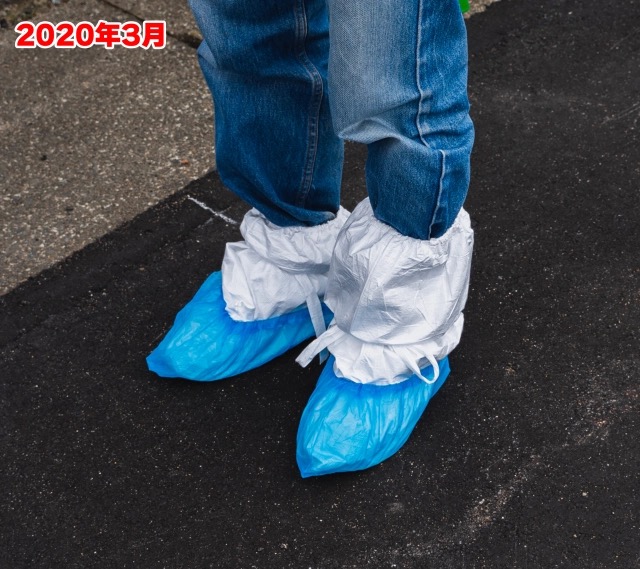
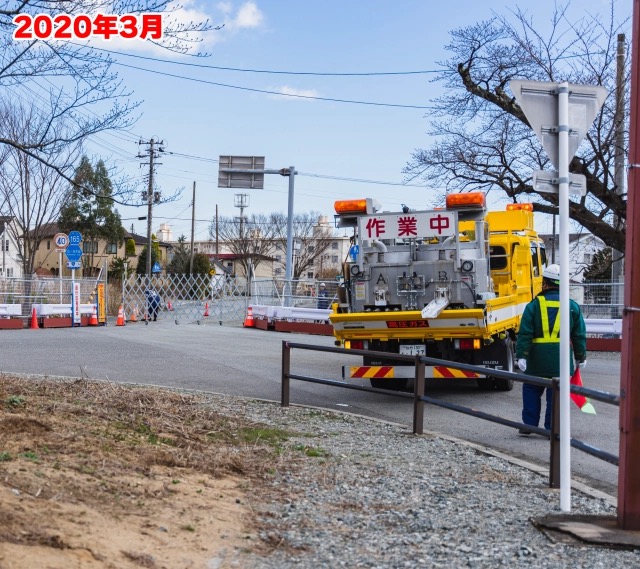
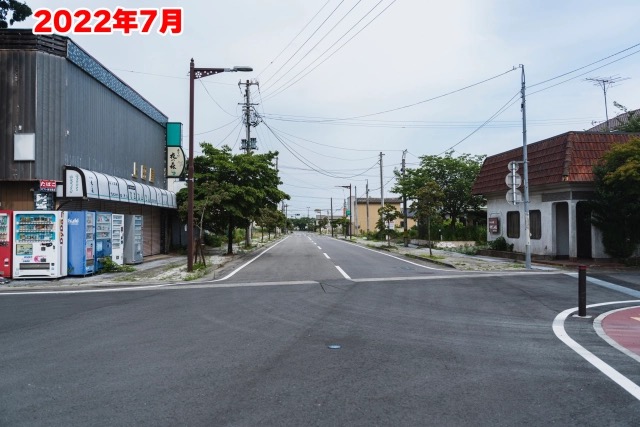
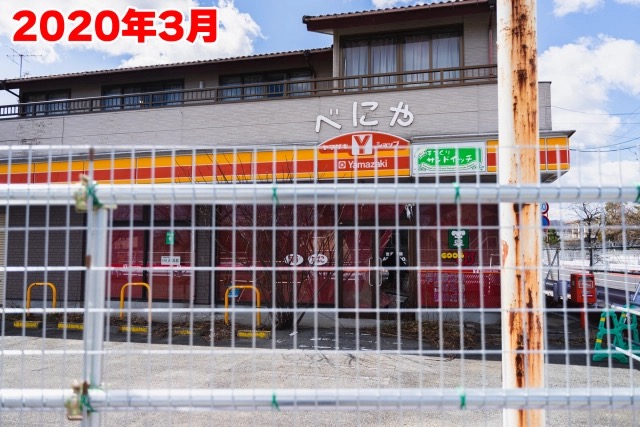
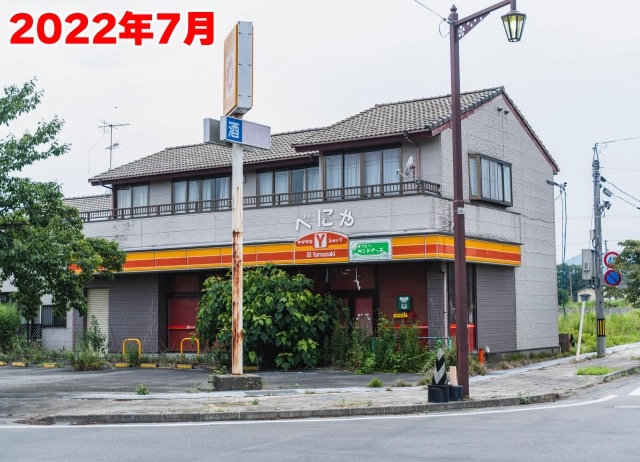
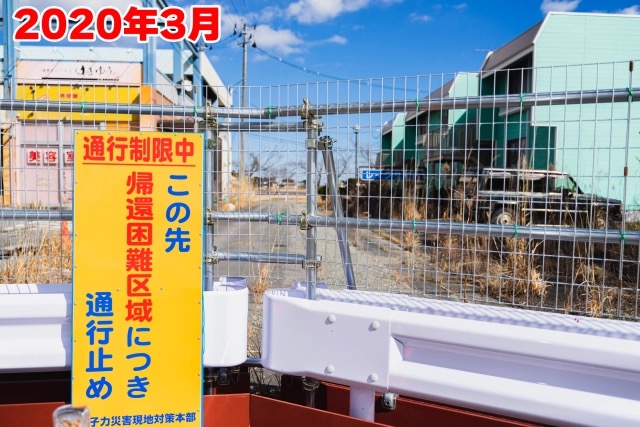
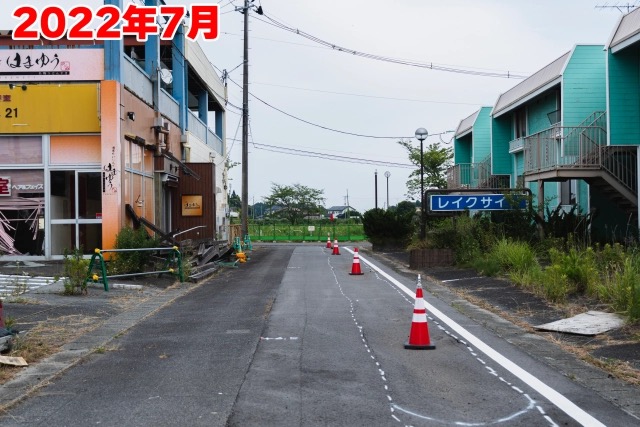
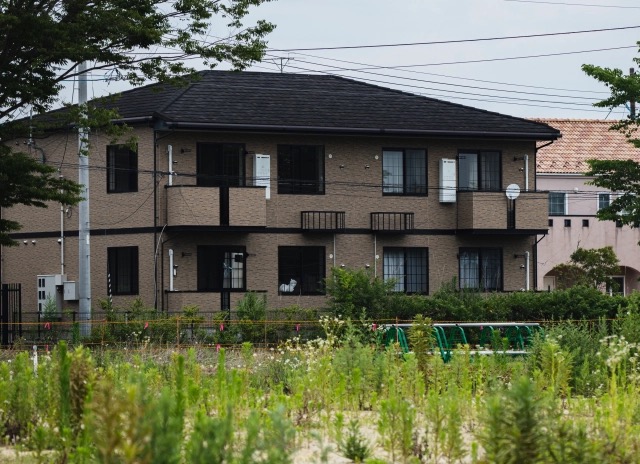
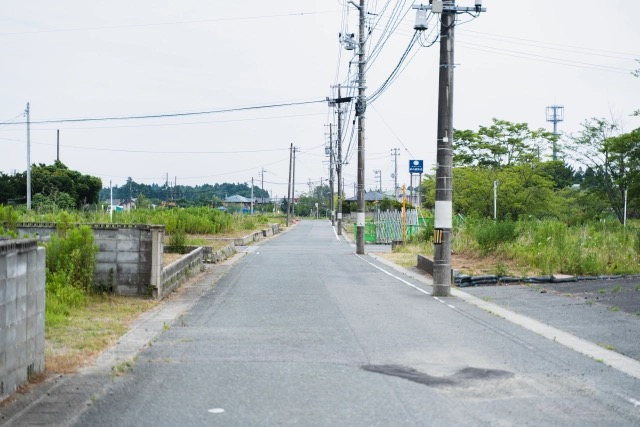
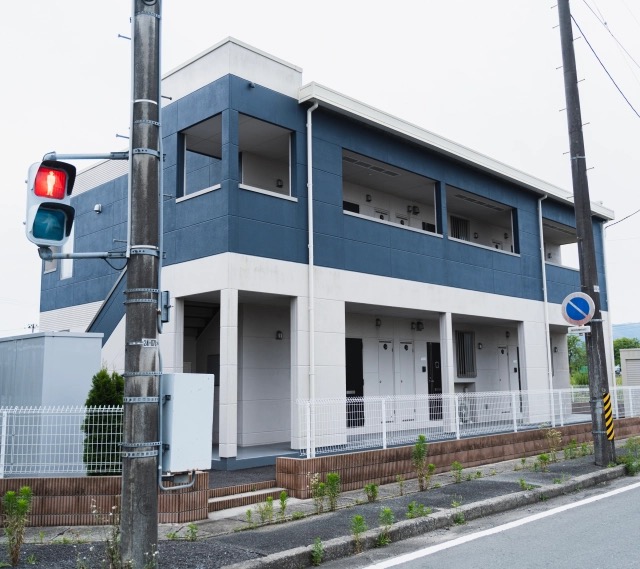
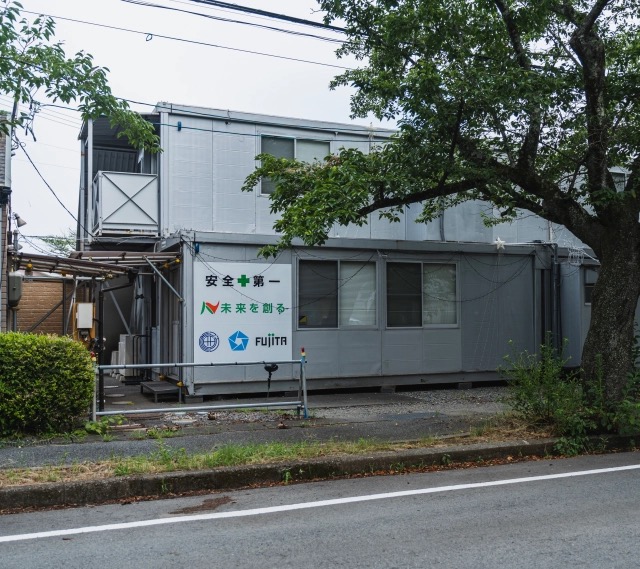
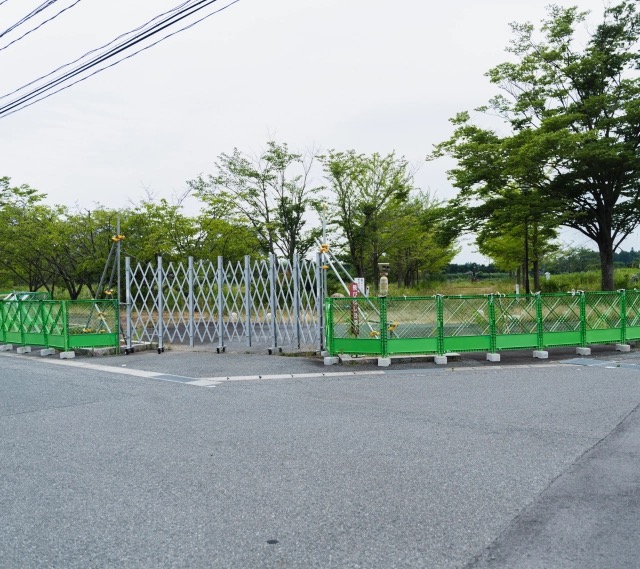
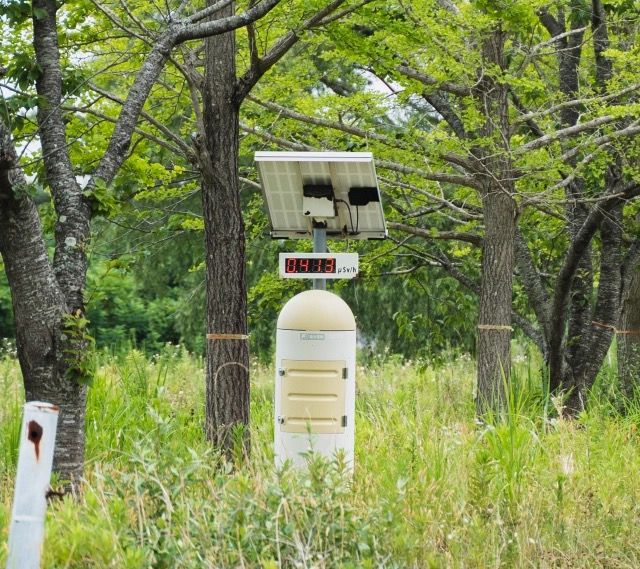
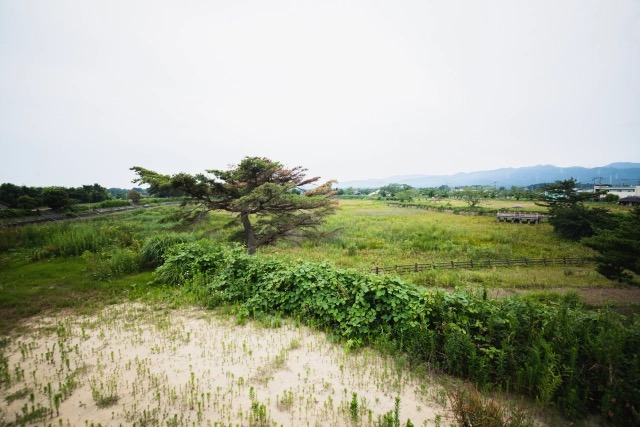
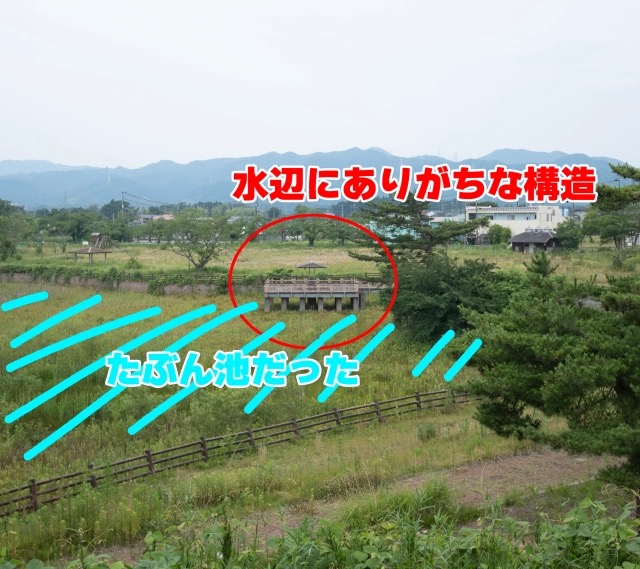
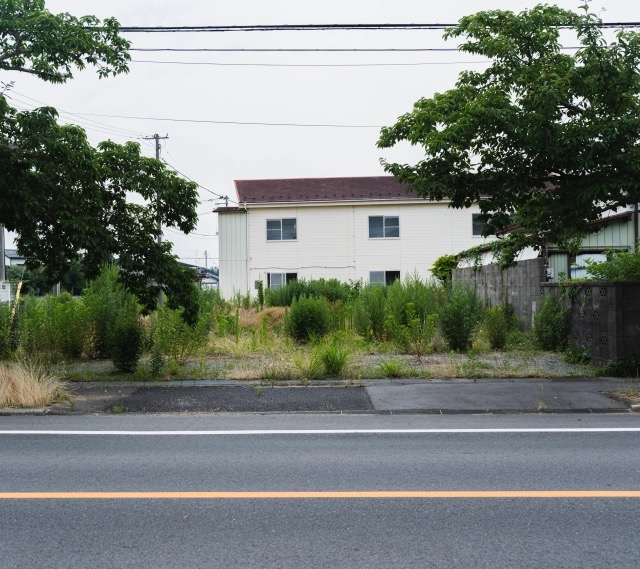
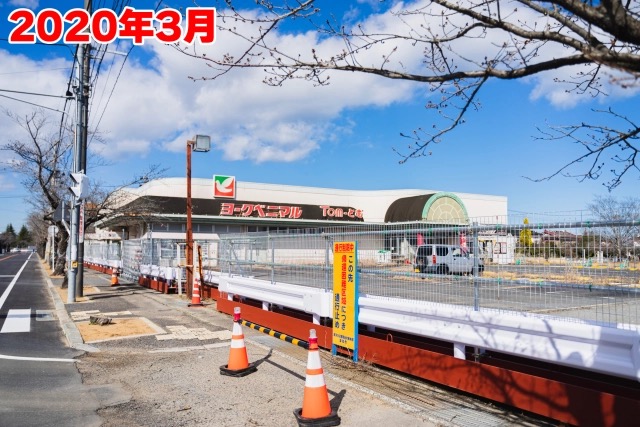
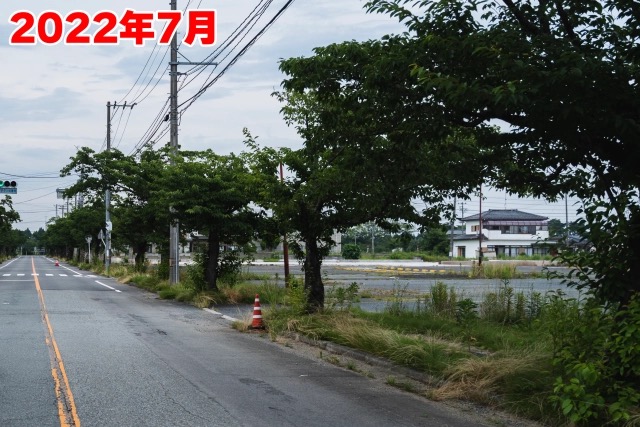
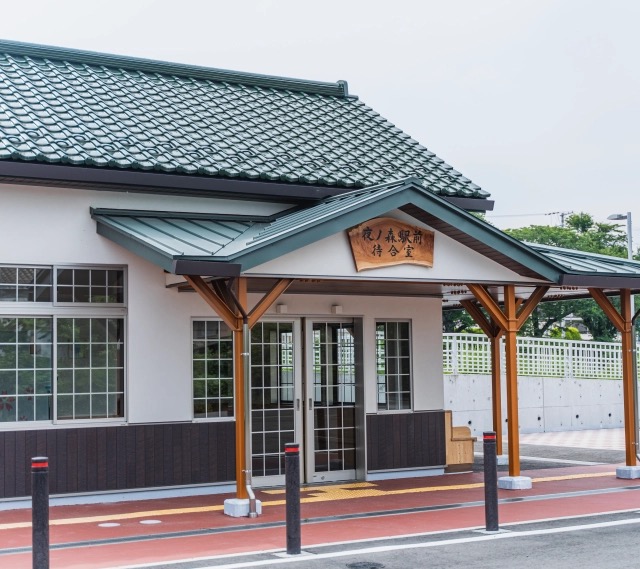
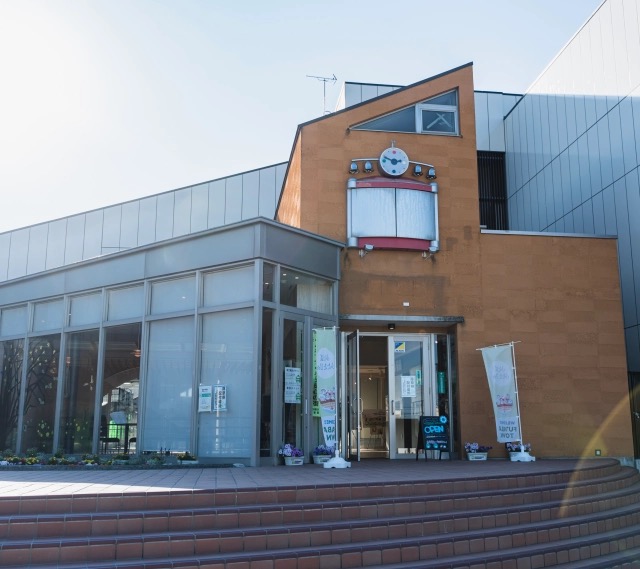
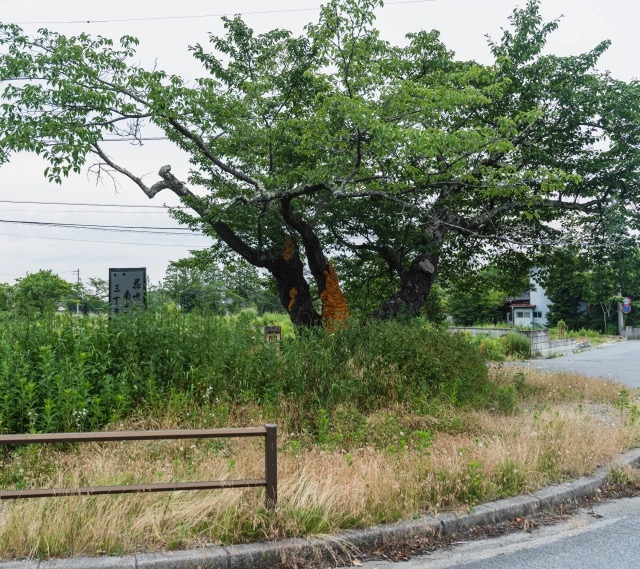
 We try fresh orange juice squeezed for us by a vending machine in Saitama【Taste test】
We try fresh orange juice squeezed for us by a vending machine in Saitama【Taste test】 How to pick out the best anago eel and other things we learned at the anago processing center
How to pick out the best anago eel and other things we learned at the anago processing center Taste-testing every single sakura sweet and cherry blossom drink we could find at Mujirushi
Taste-testing every single sakura sweet and cherry blossom drink we could find at Mujirushi McDonald’s Japan’s Samurai Mac series: which burger is the greatest warrior of all?
McDonald’s Japan’s Samurai Mac series: which burger is the greatest warrior of all? We learned how to make a calligraphy brush from the masters of Kumanofude in Hiroshima
We learned how to make a calligraphy brush from the masters of Kumanofude in Hiroshima Red light district sushi restaurant in Tokyo shows us just how wrong we were about it
Red light district sushi restaurant in Tokyo shows us just how wrong we were about it Historical figures get manga makeovers from artists of Spy x Family, My Hero Academia and more
Historical figures get manga makeovers from artists of Spy x Family, My Hero Academia and more Japanese ramen restaurants under pressure from new yen banknotes
Japanese ramen restaurants under pressure from new yen banknotes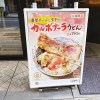 Limited-edition Carbonara Udon will anger noodle purists and pasta lovers 【Taste test】
Limited-edition Carbonara Udon will anger noodle purists and pasta lovers 【Taste test】 McDonald’s new Happy Meals offer up cute and practical Sanrio lifestyle goods
McDonald’s new Happy Meals offer up cute and practical Sanrio lifestyle goods Beautiful Red and Blue Star luxury trains set to be Japan’s new Hokkaido travel stars
Beautiful Red and Blue Star luxury trains set to be Japan’s new Hokkaido travel stars Pokémon Sleep camping suite and guestrooms coming to Tokyo Hyatt along with giant Snorlax burgers
Pokémon Sleep camping suite and guestrooms coming to Tokyo Hyatt along with giant Snorlax burgers Starbucks Japan adds a Motto Frappuccino to the menu for a limited time
Starbucks Japan adds a Motto Frappuccino to the menu for a limited time Japan’s massive matcha parfait weighs 6 kilos, contains hidden surprises for anyone who eats it
Japan’s massive matcha parfait weighs 6 kilos, contains hidden surprises for anyone who eats it French Fries Bread in Tokyo’s Shibuya becomes a hit on social media
French Fries Bread in Tokyo’s Shibuya becomes a hit on social media All-you-can-drink Starbucks and amazing views part of Tokyo’s new 170 meter-high sky lounge
All-you-can-drink Starbucks and amazing views part of Tokyo’s new 170 meter-high sky lounge Studio Ghibli releases new action figures featuring Nausicaä of the Valley of the Wind characters
Studio Ghibli releases new action figures featuring Nausicaä of the Valley of the Wind characters New private rooms on Tokaido Shinkansen change the way we travel from Tokyo to Kyoto
New private rooms on Tokaido Shinkansen change the way we travel from Tokyo to Kyoto Studio Ghibli glasses cases let anime characters keep an eye on your spectacles
Studio Ghibli glasses cases let anime characters keep an eye on your spectacles Tokyo Tsukiji fish market site to be redeveloped with 50,000-seat stadium, hotel, shopping center
Tokyo Tsukiji fish market site to be redeveloped with 50,000-seat stadium, hotel, shopping center Beautiful Ghibli sealing wax kits let you create accessories and elegant letter decorations【Pics】
Beautiful Ghibli sealing wax kits let you create accessories and elegant letter decorations【Pics】 Studio Ghibli releases Kiki’s Delivery Service chocolate cake pouches in Japan
Studio Ghibli releases Kiki’s Delivery Service chocolate cake pouches in Japan New definition of “Japanese whiskey” goes into effect to prevent fakes from fooling overseas buyers
New definition of “Japanese whiskey” goes into effect to prevent fakes from fooling overseas buyers Our Japanese reporter visits Costco in the U.S., finds super American and very Japanese things
Our Japanese reporter visits Costco in the U.S., finds super American and very Japanese things Studio Ghibli unveils Mother’s Day gift set that captures the love in My Neighbour Totoro
Studio Ghibli unveils Mother’s Day gift set that captures the love in My Neighbour Totoro New Japanese KitKat flavour stars Sanrio characters, including Hello Kitty
New Japanese KitKat flavour stars Sanrio characters, including Hello Kitty More foreign tourists than ever before in history visited Japan last month
More foreign tourists than ever before in history visited Japan last month New Pokémon cakes let you eat your way through Pikachu and all the Eevee evolutions
New Pokémon cakes let you eat your way through Pikachu and all the Eevee evolutions Sales of Japan’s most convenient train ticket/shopping payment cards suspended indefinitely
Sales of Japan’s most convenient train ticket/shopping payment cards suspended indefinitely Sold-out Studio Ghibli desktop humidifiers are back so Totoro can help you through the dry season
Sold-out Studio Ghibli desktop humidifiers are back so Totoro can help you through the dry season Japanese government to make first change to romanization spelling rules since the 1950s
Japanese government to make first change to romanization spelling rules since the 1950s Ghibli founders Toshio Suzuki and Hayao Miyazaki contribute to Japanese whisky Totoro label design
Ghibli founders Toshio Suzuki and Hayao Miyazaki contribute to Japanese whisky Totoro label design Doraemon found buried at sea as scene from 1993 anime becomes real life【Photos】
Doraemon found buried at sea as scene from 1993 anime becomes real life【Photos】 Tokyo’s most famous Starbucks is closed
Tokyo’s most famous Starbucks is closed One Piece characters’ nationalities revealed, but fans have mixed opinions
One Piece characters’ nationalities revealed, but fans have mixed opinions We asked a Uniqlo employee what four things we should buy and their suggestions didn’t disappoint
We asked a Uniqlo employee what four things we should buy and their suggestions didn’t disappoint Princesses, fruits, and blacksmiths: Study reveals the 30 most unusual family names in Japan
Princesses, fruits, and blacksmiths: Study reveals the 30 most unusual family names in Japan We fall in love with a bucket of Japanese custard pudding【Taste test】
We fall in love with a bucket of Japanese custard pudding【Taste test】 Japanese convenience store’s cheap knockoff croissant — is it any good?
Japanese convenience store’s cheap knockoff croissant — is it any good? We travel across the city like royalty — Hiroshima streetcar turns into fancy, private dining area
We travel across the city like royalty — Hiroshima streetcar turns into fancy, private dining area We tried super spicy wasabi ramen and yakisoba that’s rumored to make anyone cry【Taste Test】
We tried super spicy wasabi ramen and yakisoba that’s rumored to make anyone cry【Taste Test】 Trying the peach custard treat in Japan that got over 20 thousand likes in a week
Trying the peach custard treat in Japan that got over 20 thousand likes in a week Trying out First Kitchen’s tsukimi mochi burgers for a taste of Japanese autumn
Trying out First Kitchen’s tsukimi mochi burgers for a taste of Japanese autumn Sakura Pizza from Domino’s Pizza Japan is here, but is it any good?【Taste test】
Sakura Pizza from Domino’s Pizza Japan is here, but is it any good?【Taste test】 We tried eating a raw “mizu nasu” eggplant, and it tastes like a weird fruit【Taste Test】
We tried eating a raw “mizu nasu” eggplant, and it tastes like a weird fruit【Taste Test】 Can you really learn to draw Totoro from that 61-second Studio Ghibli producer video?【Experiment】
Can you really learn to draw Totoro from that 61-second Studio Ghibli producer video?【Experiment】 We try the four new offerings in the Mister Donut x Gion Tsujiri collaboration series【Taste test】
We try the four new offerings in the Mister Donut x Gion Tsujiri collaboration series【Taste test】 We tried every single flavor of Mister Donut’s Belgian chocolatier collab donuts【Taste test】
We tried every single flavor of Mister Donut’s Belgian chocolatier collab donuts【Taste test】 Can Japan’s one-person granite plate cooker take you to solo stone steak paradise? Let’s find out
Can Japan’s one-person granite plate cooker take you to solo stone steak paradise? Let’s find out We try Matsuya’s beef stroganoff, only available at select spots, and learn a bit about Matsuya
We try Matsuya’s beef stroganoff, only available at select spots, and learn a bit about Matsuya Comparing Starbucks lucky bags in Japan proves some bundles are better than others
Comparing Starbucks lucky bags in Japan proves some bundles are better than others Can this cushion really protect an egg from being sat on? How about a few punches?
Can this cushion really protect an egg from being sat on? How about a few punches? Godiva creates a new drink with Japanese sake starter
Godiva creates a new drink with Japanese sake starter
Leave a Reply